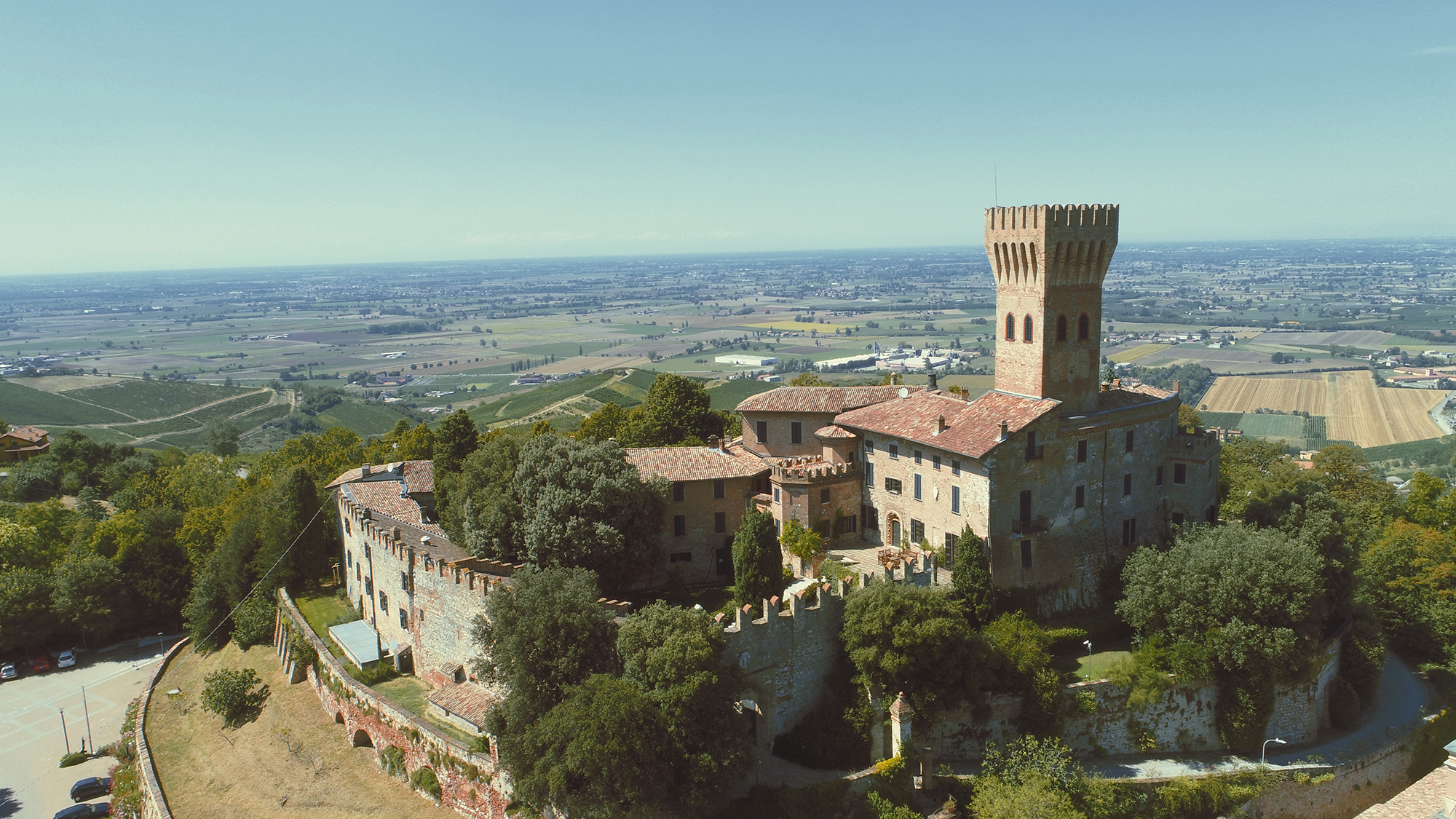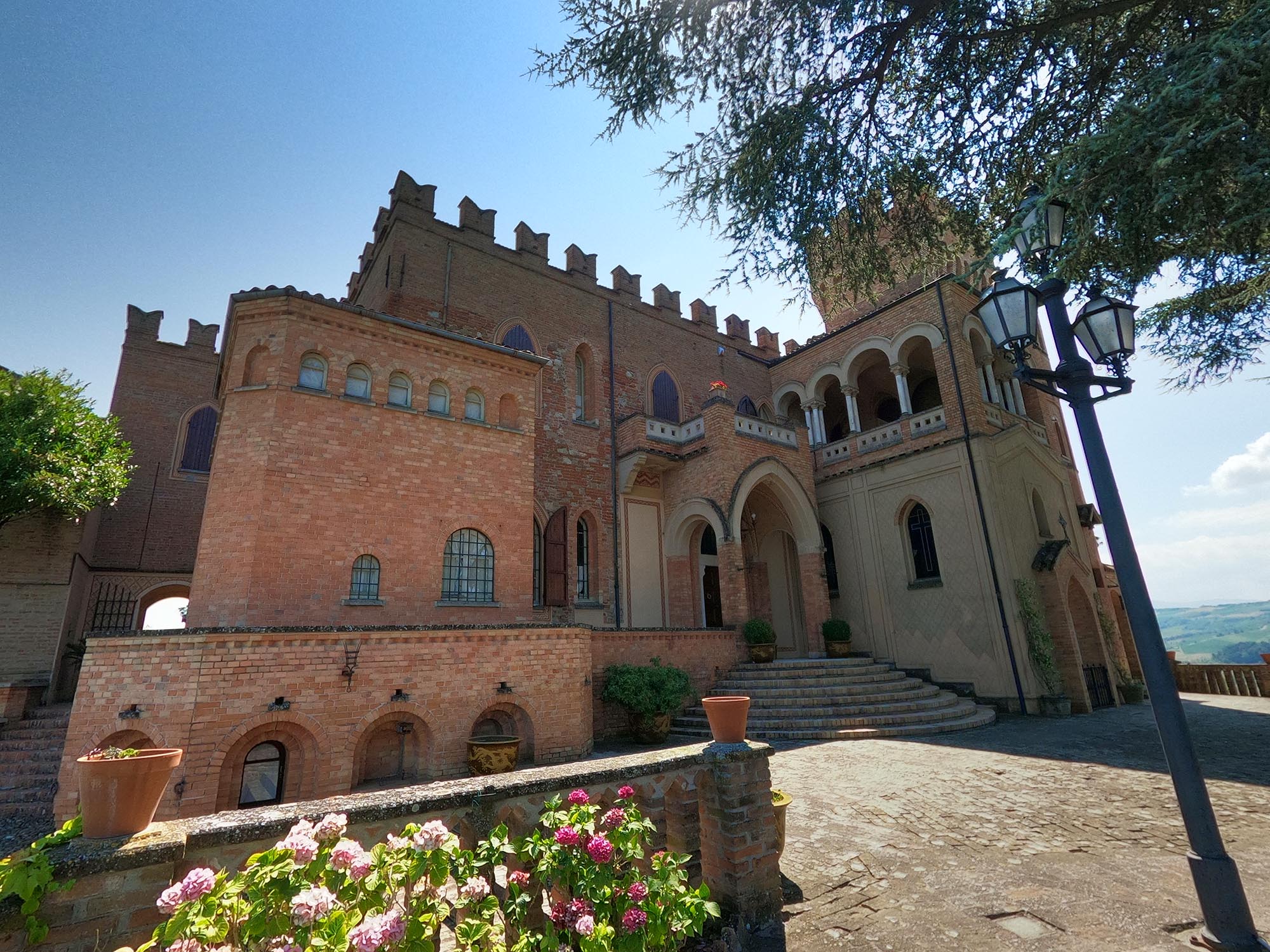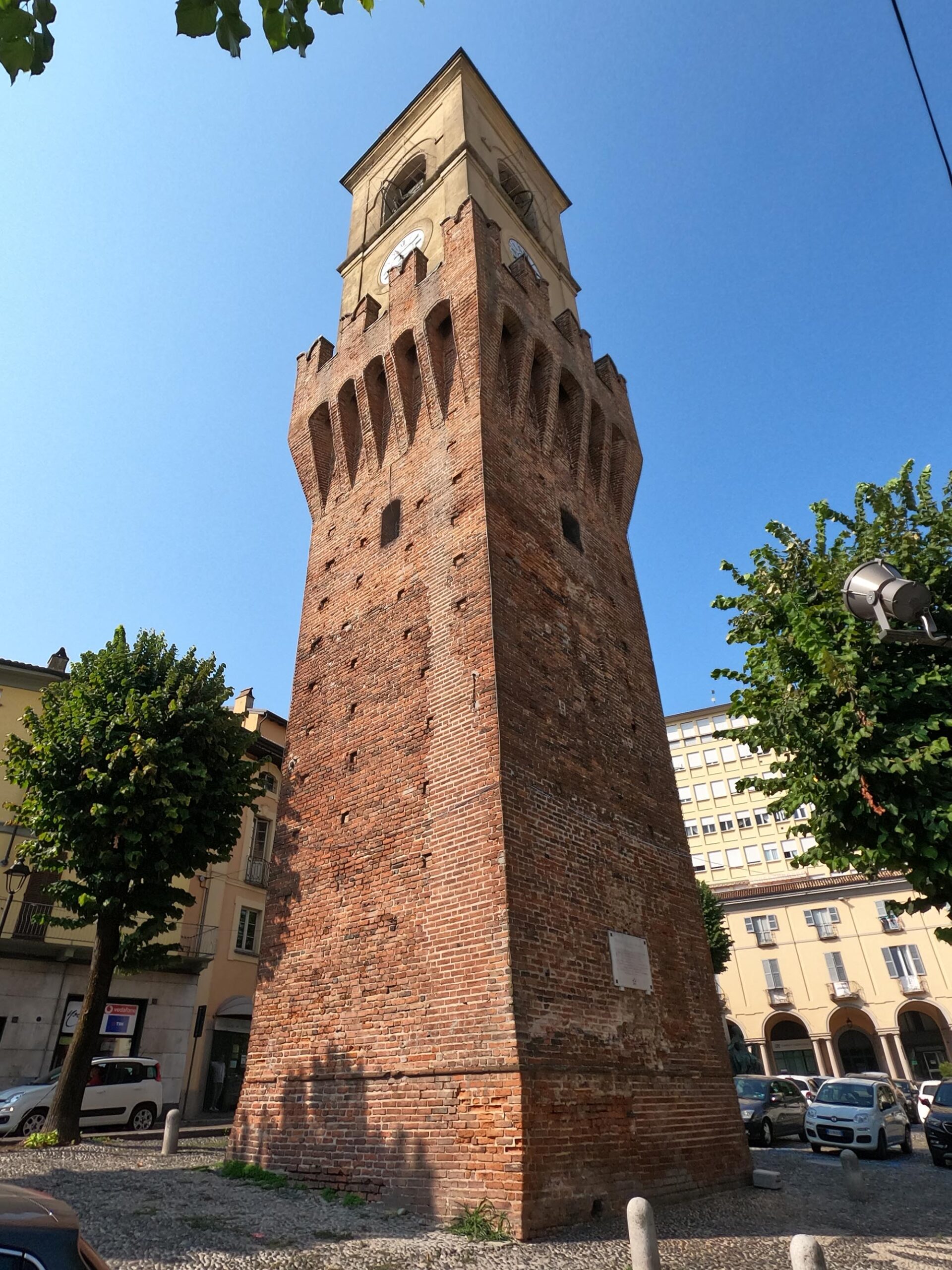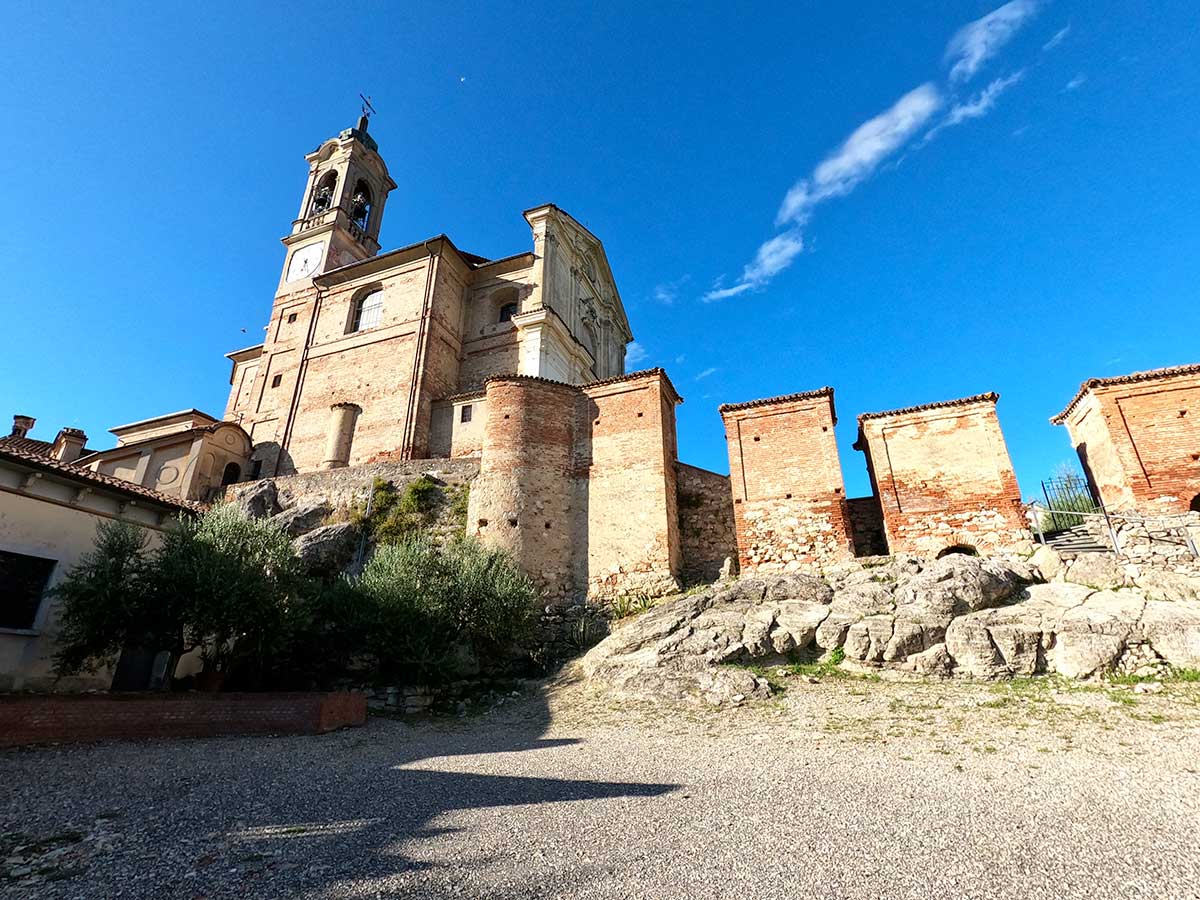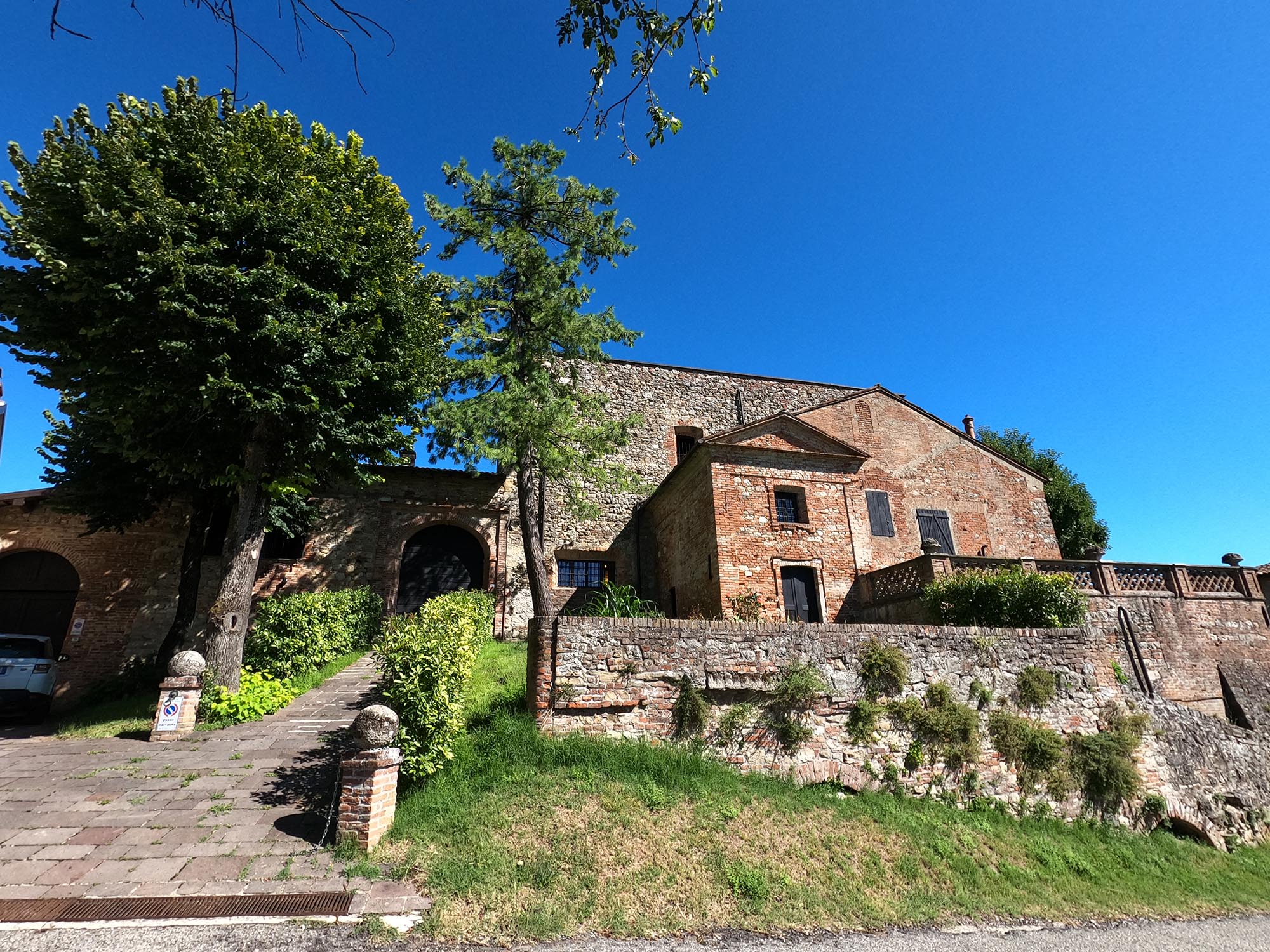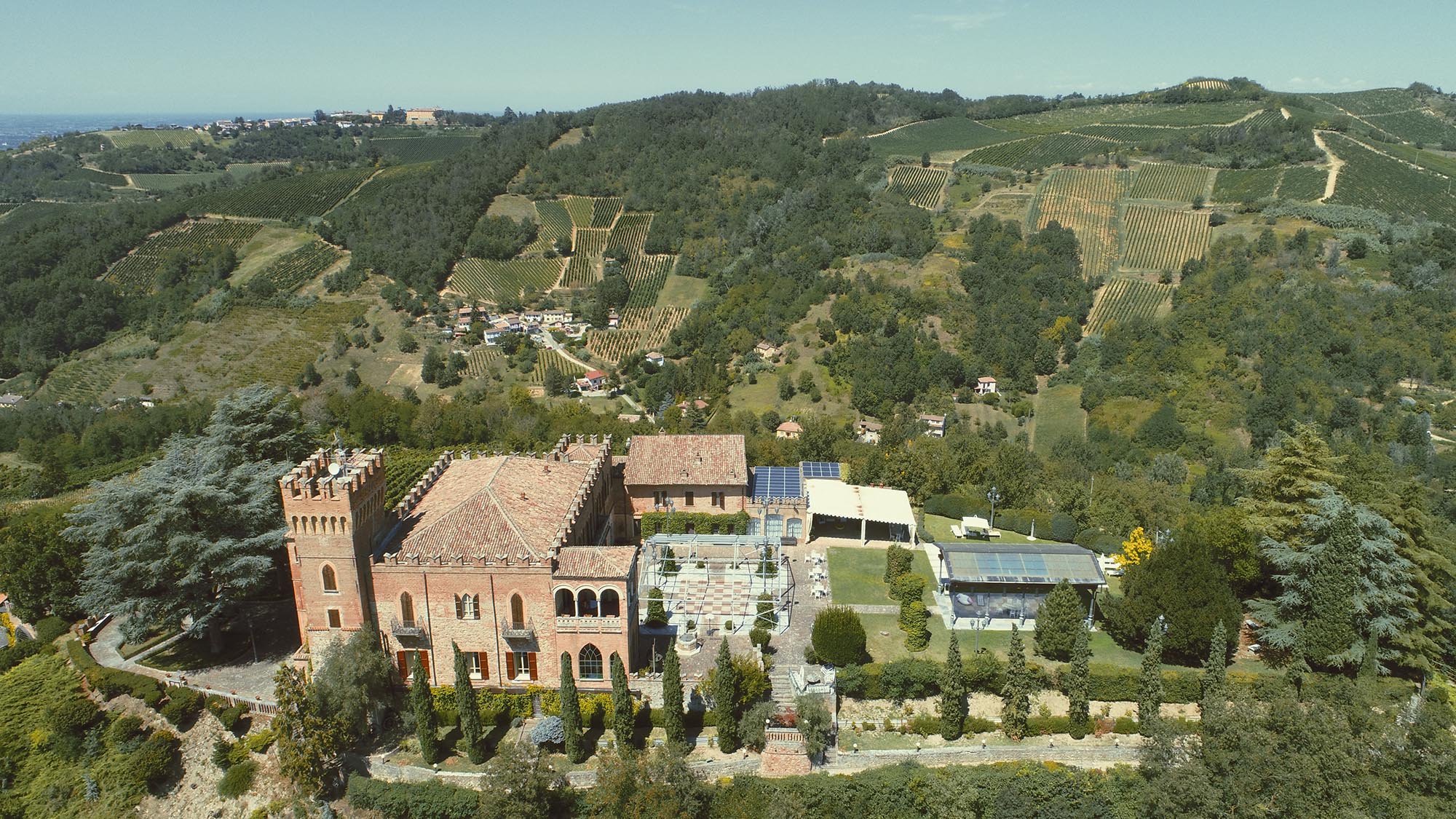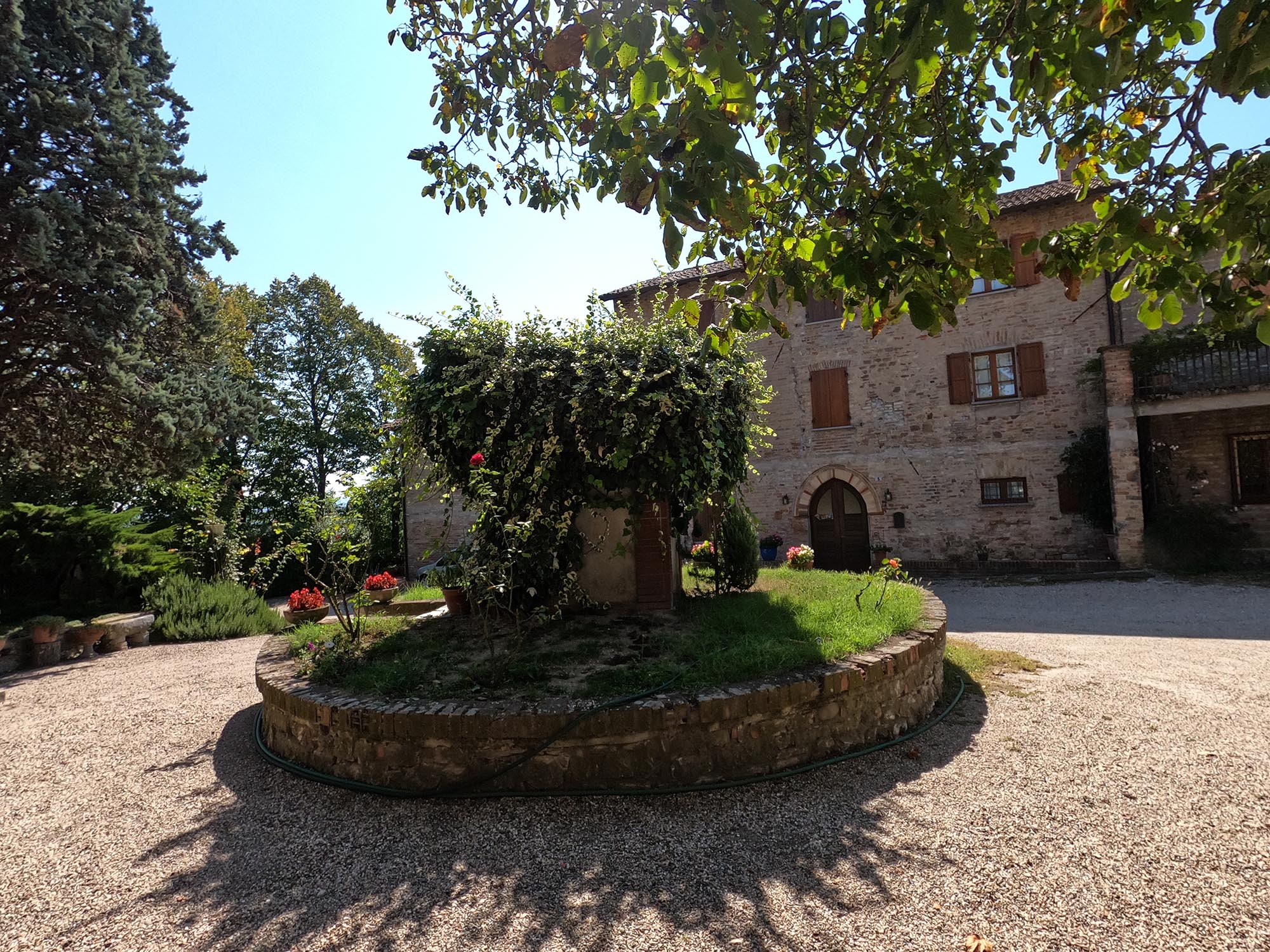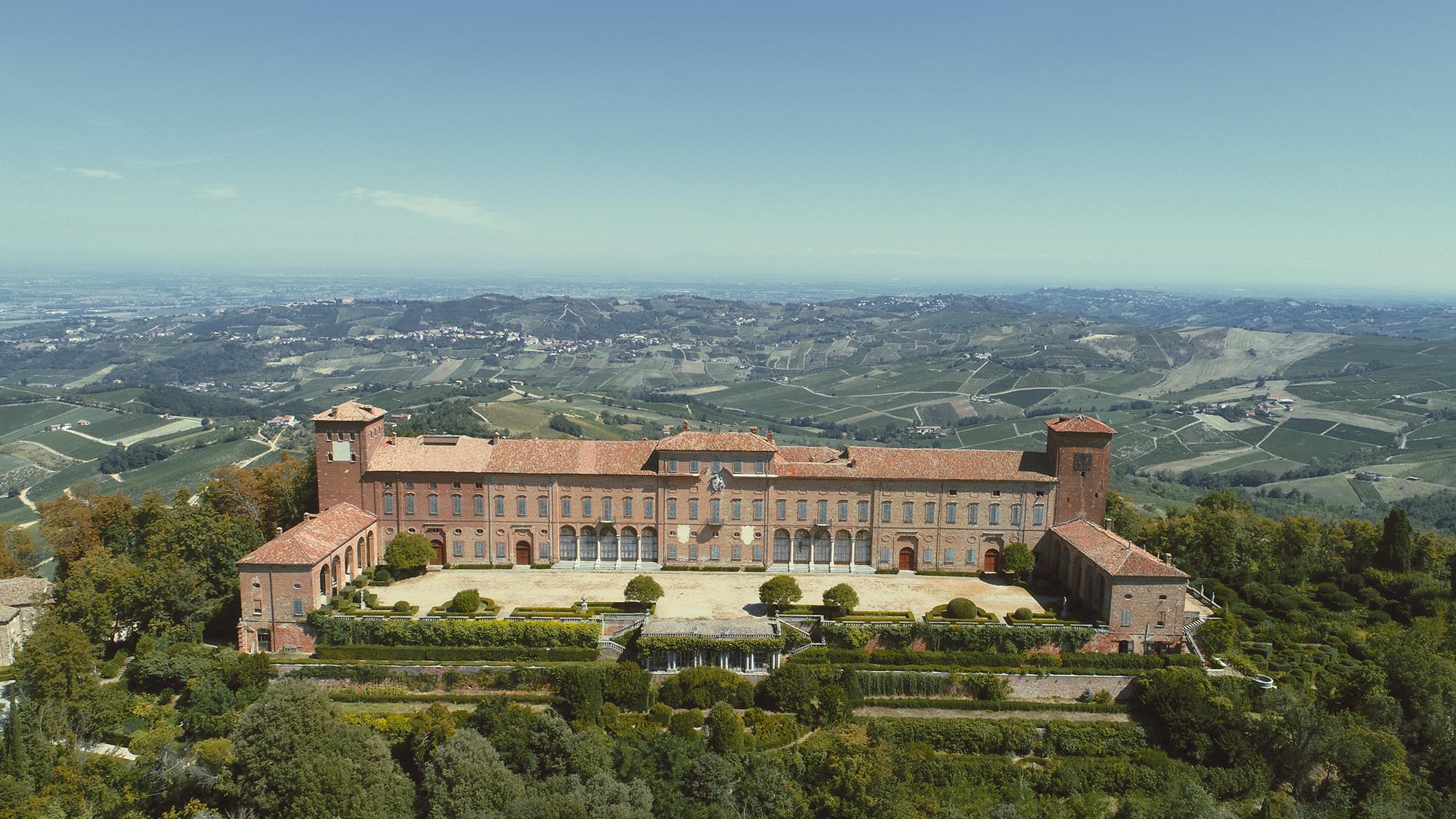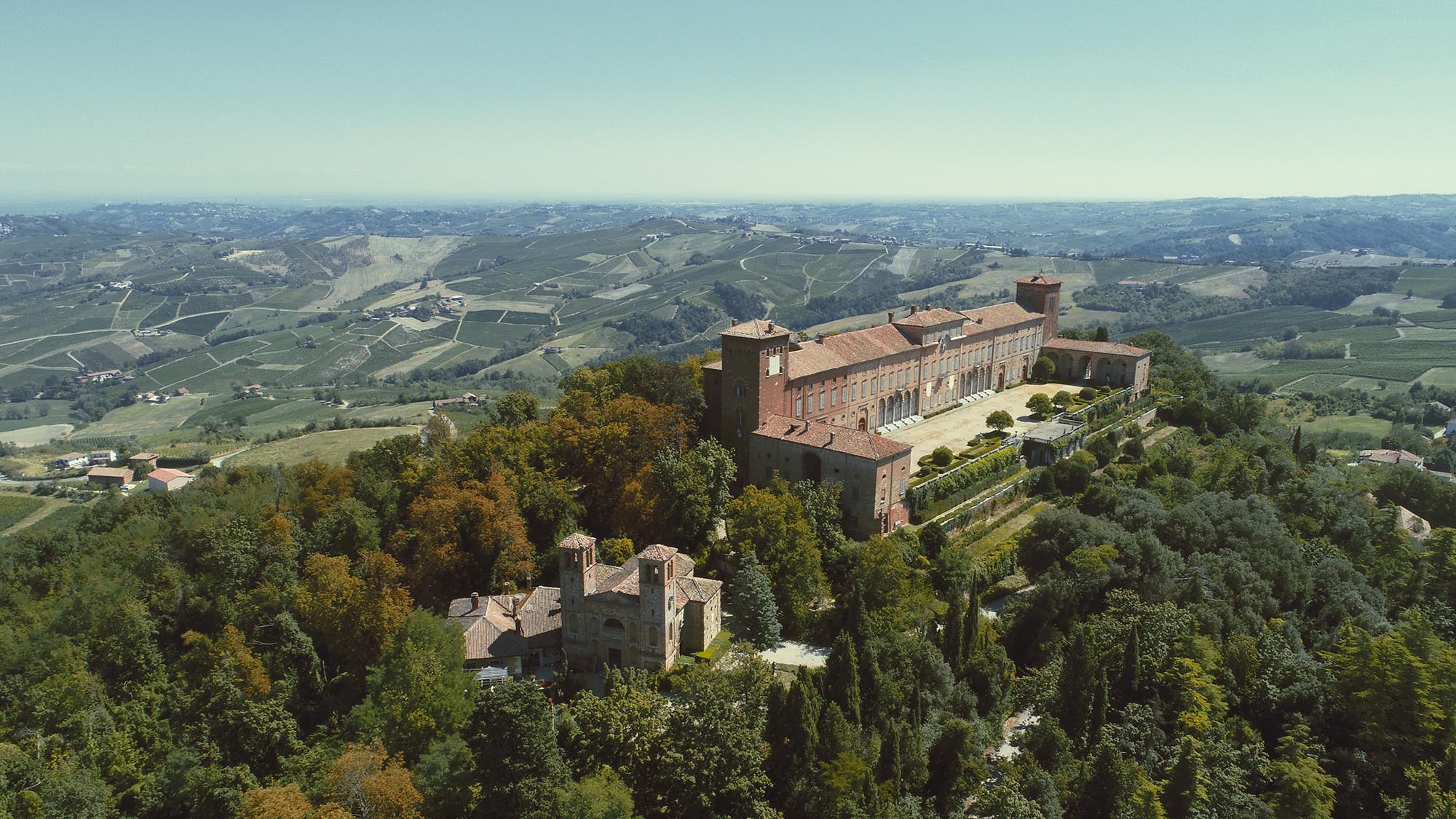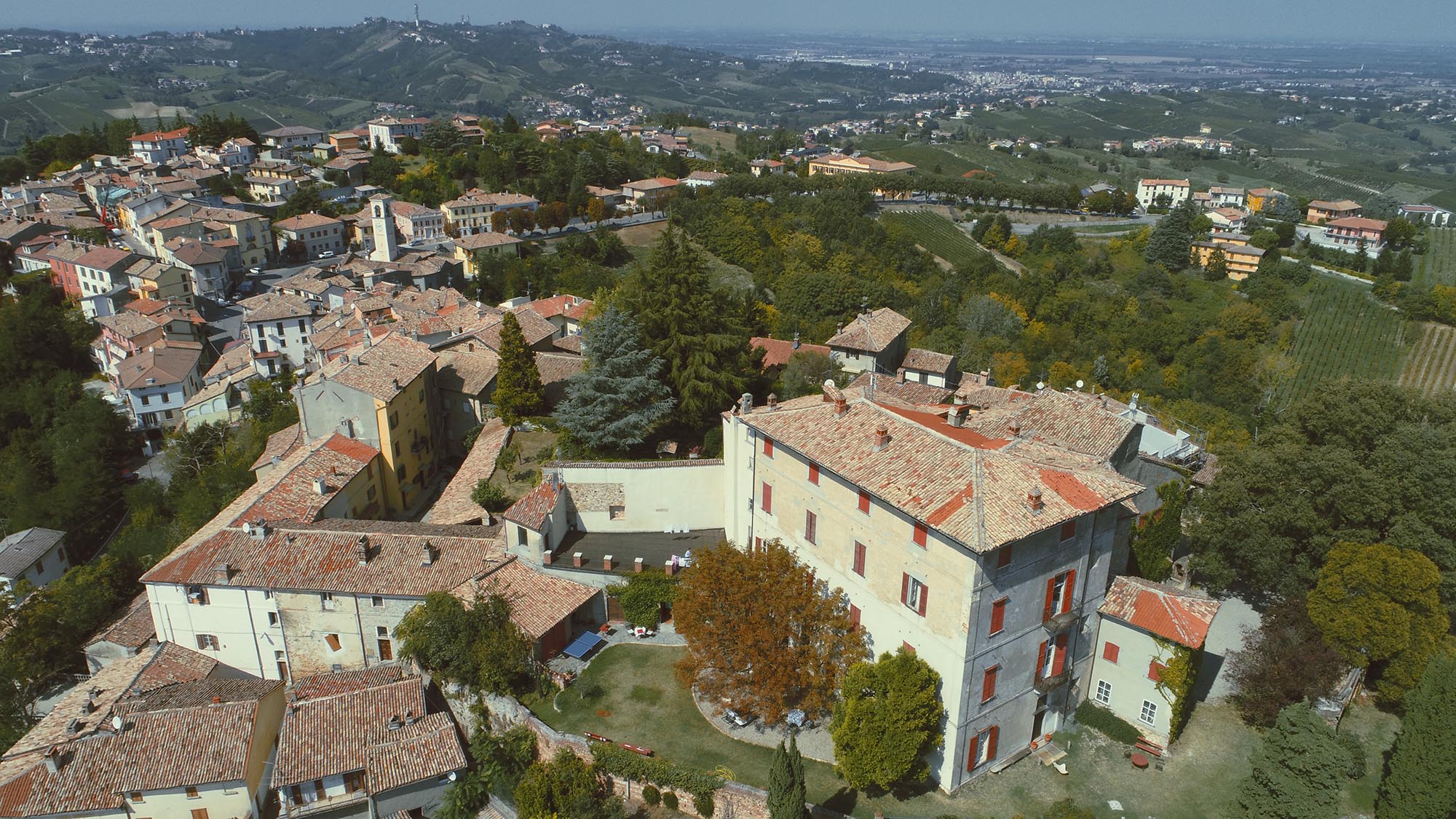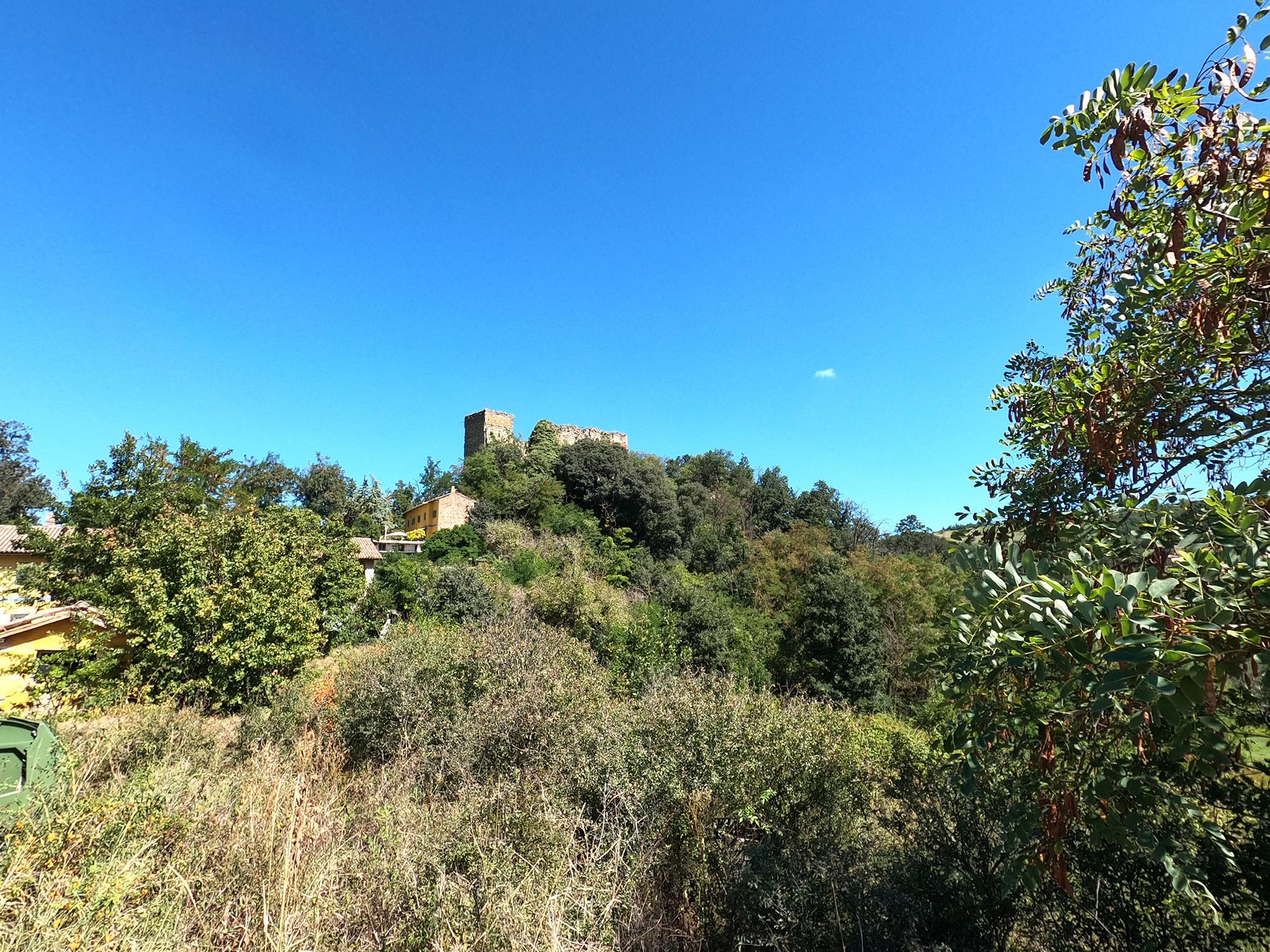Calvignano: Standing atop a hillock, the castle of Calvignano dominates and predates the village centre. It was almost completely demolished in the 1960s. Its remains, now surrounded by a grove, delimit a courtyard where the well is enclosed, transformed into a circular exedra. The building already existed in the 12th century. It is privately owned.
Canneto Pavese: In the oldest hamlet of Muntué, there are the ruins of a castle dating back to the 11th century; unfortunately, all that remains are the cellars, built with exposed bricks, and a few ruins in a rustic complex annexed to the 18th century Palazzo d’Adda. They form one of the most significant examples of those agricultural-noble complexes around which the entire economy of the Oltrepò Pavese developed, particularly in the eighteenth century.
Castana: Here is a castle of medieval origin which, built on a hill in a dominant position over the valley, made Castana an important strategic nucleus. It was probably built by the Pavese monks of San Bartolomeo in Strada in 1290, a time when Castana consisted of a fortification around which stood a few thatched houses. It was devastated by the fighting between Cremonese and Piacentines on one side and the Marquis of Monferrato on the other, who took refuge within its walls, and was set on fire. Little remains of the original structure of the castle, as it was almost entirely rebuilt in the 18th century and converted into a stately home. Today it is a private residence.
Cigognola: The construction of Cigognola castle by the Sannazzaro family in a strategically important position can be traced back to the 13th century. The castle had a circle of walls that served on the one hand to provide refuge to the people in case of attack and on the other hand to defend the castle itself, in the case of the south-facing wall. Today, after various renovations in different eras, the castle is privately owned.
Golferenzo: Golferenzo castle was destroyed by the Piacenza troops in 1216. After its reconstruction, it was sold to Barnaba Belcredi in 1691. In 1890, Antonio Cavagna Sangiuliani wrote: “In Golferenzo, visitors can admire several civilian dwellings belonging to various wealthy families from the village, as well as an ancient mansion built in the style of a castle, which doubtless belonged to the ancient feudal lords here”.
Montebello della Battaglia: The present-day castle of the charming medieval village, located at the top of the church square, was built by the Beccaria family in 1472, incorporating restructured old buildings. It soon passed into the ownership of the Bellocchio family from Pavia, while the fief, after the decline of the Delconte family, fell under the aegis of the Visconti family, then Dukes of Milan, who gave the Beccaria family the title of Counts of Montebello. This castle is now being restored by private individuals in order to be used for hospitality, culture, and various events.
Montù Beccaria: Montù used to have a castle, which was destroyed in 1216 by the Piacentini during the conflict with the Pavesi, but was later rebuilt. The castle is located at 300 m above sea level on a hill overlooking the village, is privately owned, and is called Castellazzo. The complex is very large, but very little remains of the fortified castle.
Mornico Losana:
Oliva Gessi: The early medieval castle stands in the historic old village centre. It has a central courtyard and a high wall surrounds the castle on three sides. These structures have been repeatedly renovated and converted into a large stately home by the Isimbardi family from 1650 onwards. The castle is privately owned. Near the castle, there is a large farm that reflects the classic structure of the Lombard farmstead on the plains, a rather unique specimen in a hilly setting.
Pietra De’ Giorgi: The castle of Pietra, founded in 1012, has walls up to 2 meters thick and is spread over different levels; it used to be surrounded by four towers, only one of which is preserved. There is a 75 m deep well in the courtyard. The fortress underwent several sieges, the first of which was held in 1277 by the Ghibellines of Pavia to overthrow the Guelph power of the nobles of Sannazzaro, the owners of the fortress. But, as proof of the solidity of its fortifications and extremely strategic position, the castle was never taken. The castle is privately owned and has been painstakingly restored.
San Damiano del Colle: San Damiano Castle is located on the hill overlooking the village. The construction of the current castle dates back to between the fourteenth and fifteenth centuries, based on the masonry technique of the original parts that are still visible. It occupied the site of a previous fortification from the early Middle Ages.
Santa Giuletta: Also worth a visit is the castle on the top of the hill in the Castello hamlet; of the original structure from the 12th century, only the cellars, once inhospitable prisons, remain. Today, the complex looks like an 18th-century villa in a neoclassical style, which has undergone numerous restorations over time. Various events are held inside in agreement between the private owners and the municipal administration.
Santa Giuletta: The Griziotti tower is an ancient tower dating back to the Middle Ages. The settlement has various historical stratifications, with traces of Roman flooring, medieval artifacts, up to the old prisons from the 1500s and buildings from the 1700s. The tower is surrounded by rural and civic buildings. It is privately owned.
Santa Maria della Versa: The Torre di Soriasco is a medieval tower built in the twelfth century and restored in 1412. It dominates the basin of the Val Versa. Soriasco was already equipped with a fortress in the eleventh century, which consisted of a walled village, surrounding walls, a castle, and a tower. The castle was destroyed by the Piacenza troops in May 1216. The village still retains its medieval appearance today.
Stradella: The historic town centre of Stradella still retains its medieval appearance and notable noble mansions. The imposing symbol of Stradella, the Civic Tower, the only direct testimony of the ancient strong city built by the Visconti, still stands on Piazza Vittorio Veneto. The tower was built in 1390, while the upper belfry was built in 1837.
Zenevredo: Traces of the ancient 12th-century castle are visible near the church, which is now privately owned. At the entrance of the noble residence, you can see the ancient well. On the facade, a plaque commemorates the birthplace of the writer from the Oltrepò, Carlo Alberto Pisani Dossi. In the historic centre, there are still various rural buildings that served the ancient monastery and the castle.
Zenevredo: Near the church, you can see the ancient defensive tower built in the fourteenth century. It dominates the landscape of the Zenevredo area. This area is crossed by numerous trekking and cycling routes, embedded in the enchanting hilly landscape.


